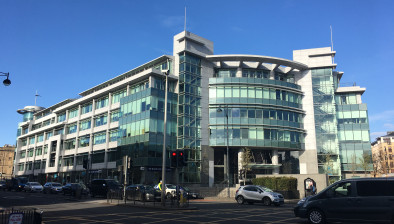Edinburgh posts ‘resilient’ Q1 office take-up

Edinburgh office take-up rose more than 25% year-on-year during the first quarter of 2025, but the lasting effects of the Covid-19 pandemic could curb activity for the remainder of the year, according to Knight Frank.
Analysis by the commercial property consultancy found that there was 92,182 sq. ft. of city centre office take-up during the first three months of the year, an increase of 27.5% on the 72,296 sq. ft. of Q1 2024.
There were 33 deals – up 26.9% compared to 26 last year – with the IT & telecommunications and professional sectors the most active, both accounting for 15% of the space transacted.
The number of regears – occupiers renewing their leases – fell to 22,849 sq. ft. across Edinburgh in the first quarter. By recent comparison, during Q2 2024 there were 135,013 sq. ft. of renewals.
Availability in the city centre remains highly constricted, with a vacancy rate of just 0.37% for new Grade A space and 6.67% for all property grades. There is no new or refurbished space set to be delivered in the next couple of years – although 882,000 sq. ft. of refurbished accommodation could join the development pipeline in the future.
Toby Withall, office agency partner at Knight Frank Edinburgh, said: “Edinburgh’s office market has posted a healthy quarter, despite the well-publicised challenges many businesses currently face. Supply remains constrained and there is little coming through imminently to absorb occupier demand, which remains relatively resilient.
“One dynamic we could see this year is a delayed effect of Covid-19. It is five years since the pandemic brought a halt to the market and lease terms were put on hold or extended for shorter than usual periods of time. Most occupiers commit to 10-year leases with a break at year five, which will mean there are fewer expiring this year.
“While that may subdue the market in the remainder of 2025, along with the impact of an uncertain macroeconomic and geopolitical backdrop, there are good reasons to be optimistic longer term. Prime rents are rising amid a restricted development pipeline, and occupiers continue to seek out quality space that aligns with their wider business objectives.”





















